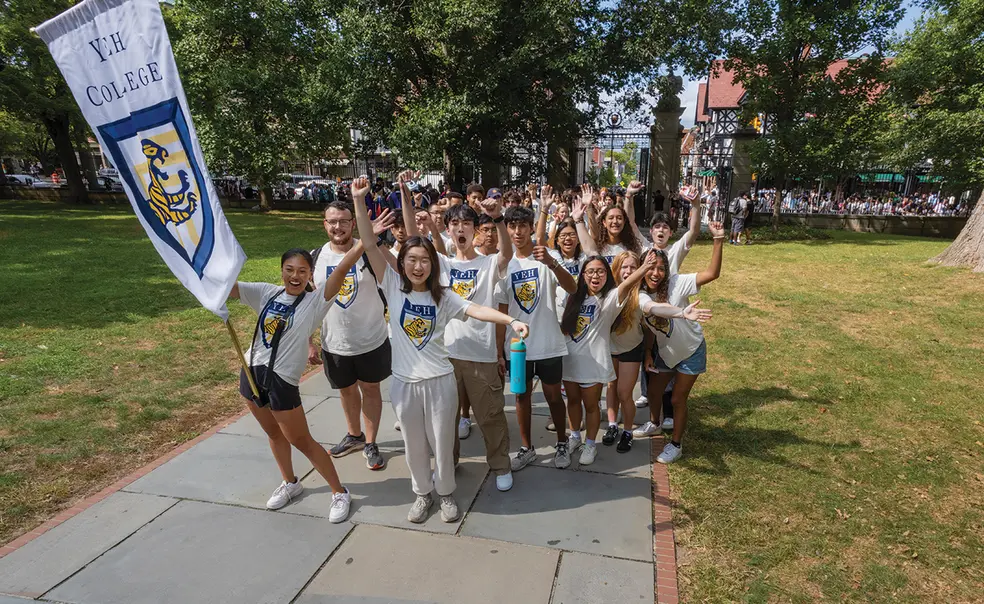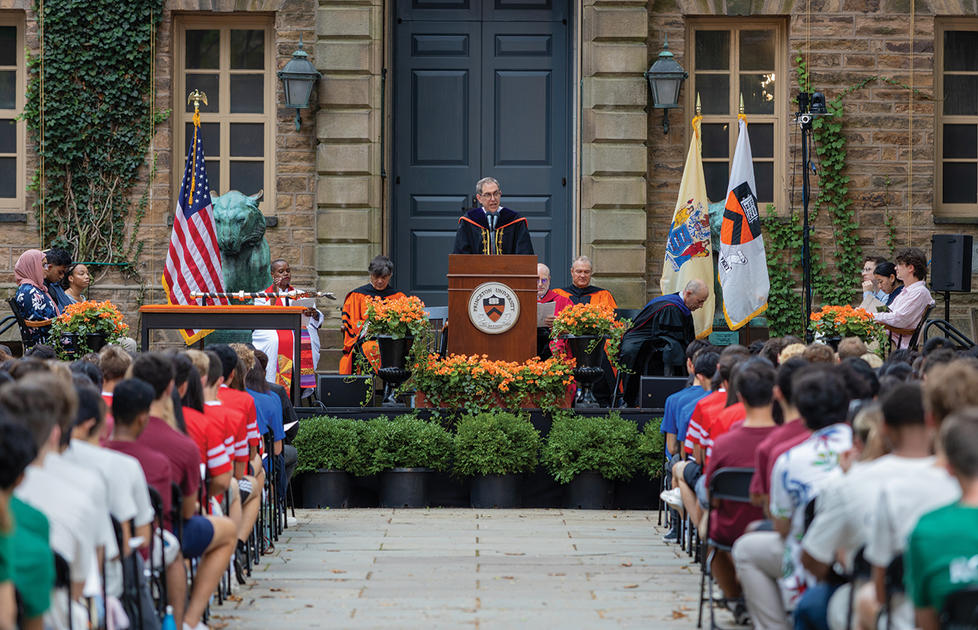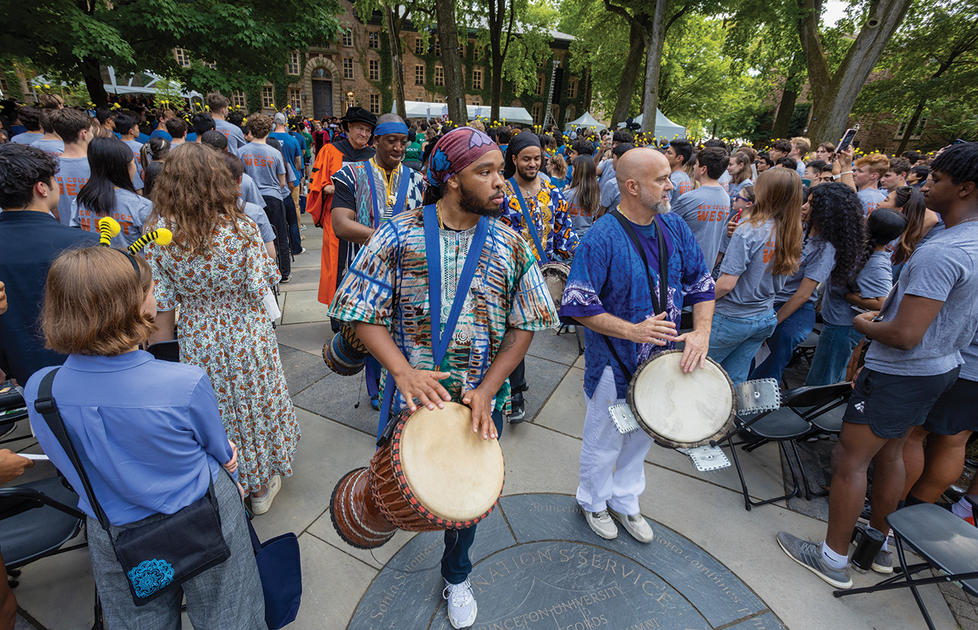Freshman Class Makeup Mostly Unchanged After Affirmative Action Overturned
The numbers show little difference from past freshman classes, despite the Supreme Court Ruling
In August, members of the Class of 2028 got their feet wet as Tigers — especially some who participated in Outdoor Action (OA).
Sankalp Gautam ’28, a New College West resident, said that he traveled with OA to Promised Land State Park in Pennsylvania. “Sleeping in the tarps was pretty intense,” he said.
Torrential rain across the Northeast caused several OA groups to return early, as their sleeping bags were drenched.
Abhijna Kavasseri ’28, from North Dakota, said she went on OA and appreciated the “centering” that OA and other orientation activities provided.
This is the 50th year of Outdoor Action, and an anniversary celebration for alumni trip leaders was planned for late September, after this issue went to press.
Some first-year students also participated in Community Action (CA) and Diversity and Difference in Action.
Aliya Kraybill ’28 stayed on campus for CA orientation. Her program was focused on health care, and she said it enabled her to get to know the local community around Princeton. Following the program, Kraybill said she “want[s] to engage in volunteering this year” while on campus.
Chris Oliver ’28, a member of Mathey College, didn’t participate in any of the traditional orientation programs. Instead, he was busy training as a member of the football team’s defensive line. Oliver told PAW that it was “nice getting to meet a bunch of people” but that “no A/C is kind of hard.”
This is the first class admitted since the Supreme Court’s overturning of affirmative action in college admissions — but at Princeton, the makeup of the Class of 2028 did not notably differ from the last class of incoming first years (see sidebar for details).
Incoming undergraduates represented 48 states and Washington, D.C., with international students from 56 countries. The Graduate School also announced that graduate students in all cohorts (not just this fall’s incoming students) represent 91 countries.
This year included the largest number of transfer students as part of an ongoing expansion of the transfer program. President Christopher Eisgruber ’83 consistently mentioned both “the Great Class of 2028” and “transfer students” (not all transfer students entering this year are in the Class of 2028) in his welcome messages to students across orientation week.
At Opening Exercises, Eisgruber briefly alluded to the protests and free speech debates that have roiled universities across the country, though his main address focused on the value of a liberal arts education.
As the Class of 2028 took in the prayers, singing, and speeches in front of Nassau Hall, Cannon Green buzzed with upperclassmen who stopped by to pick up free T-shirts before the celebratory Pre-rade.
Christian Gonzalez ’28 of New College West said that Opening Exercises were “really worldly” because of the number of different faiths represented during the service.
Orientation wrapped up with a talk with Fei-Fei Li ’99, a computer science professor at Stanford and the author of the Pre-read for this year, The Worlds I See: Curiosity, Exploration, and Discovery at the Dawn of AI. The book focuses on the need to regulate and safeguard the rise of artificial intelligence (AI).
“There are places where no machine can go: when a human needs a human, whether it’s a loved one or a professional one or a team, or a combination,” Li said at the Pre-read assembly. “And I think that’s how we know that AI will never replace our humanity.”
By the Numbers
UNDERGRADUATE CLASS OF 2028
First-time, first-year
Applicants: 40,468
Admitted: 1,868 (4.6%)
Enrolled: 1,411
Asian American: 24% (26% in Class of 2027)
Black or African American: 9% (9% in 2027)
Hispanic or Latino: 9% (10% in 2027)
Multiracial: 7% (7% in 2027)
American Indian or Alaska Native: less than 1% (less than 1% in 2027)
Native Hawaiian American or Other Pacific Islander: 0% (less than 1% in 2027)
White: 31% (32% in 2027)
Race/ethnicity unknown: 8% (5% in 2027)
International students: 12% (14% in 2027)
Children of alumni: 11%
Qualified for financial aid: 72%
Eligible for Pell Grants: 22%
First-generation college students: 16%
Bachelor of science in engineering students: 32%
TRANSFER STUDENTS
Enrolled: 36
From community colleges: 26
Military (reservists or veterans): 23
First-generation college students: 22
GRADUATE STUDENTS
Applicants: 19,931
Admitted: 1,465 (7.4%)
Enrolled: 765
Doctoral-degree students: 573
Master’s-degree students: 192
Humanities and social sciences: 339
Natural sciences and engineering: 426
International students: 343
Among U.S. students
From underrepresented racial or ethnic groups: 16% (21% for cohort entering in 2023)
From first-generation or low-income backgrounds: 25% (25% in 2023)














No responses yet